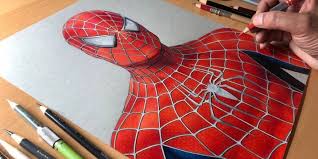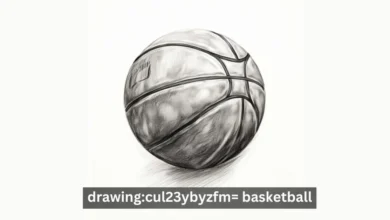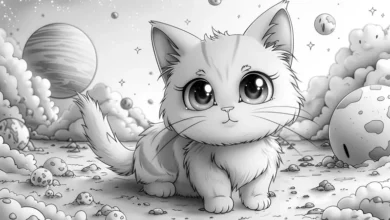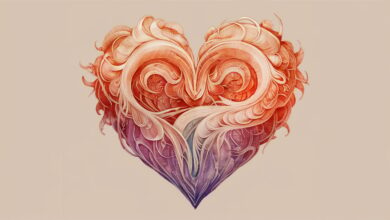Kawaii Inspirations: Famous Artists and Their Iconic kawaii:zzkrcgmtkfc= dibujos
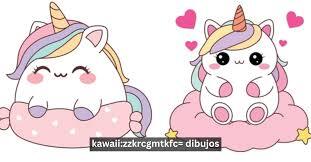
Introduction to kawaii:zzkrcgmtkfc= dibujosand its Origins
Kawaii:zzkrcgmtkfc= dibujos, a delightful blend of cuteness and creativity, has taken the art world by storm. Originating from Japan, this charming aesthetic captures hearts with its playful characters and vibrant colors. Imagine a world where everything is adorable—where monsters smile, animals wear hats, and even inanimate objects come to life with personality. This magical realm invites both artists and fans alike to embrace their inner child.
In this blog post, we will dive into the enchanting universe of kawaii-inspired art through the lens of some iconic creators. You’ll discover how these masters infuse their work with whimsy while also shaping pop culture as we know it today. Ready to explore? Let’s embark on this colorful journey together!
What Makes a Drawing kawaii:zzkrcgmtkfc= dibujos
Kawaii:zzkrcgmtkfc= dibujos are characterized by their charm and innocence. At first glance, these drawings evoke feelings of joy and warmth. It’s that unmistakable cuteness that draws people in.
The features often include oversized heads, large sparkling eyes, and tiny bodies. This exaggeration creates an endearing quality that captivates audiences across ages. Soft colors play a pivotal role as well—pinks, pastels, and light hues dominate the kawaii palette.
Expressions matter too; wide smiles or playful poses enhance the overall sweetness of each character. Kawaii art captures whimsical scenarios that spark imagination.
It’s not just about aesthetics; it represents a cultural movement celebrating positivity and happiness. Each drawing invites viewers to embrace childlike wonder while navigating adult realities. The essence of kawaii is rooted deeply in emotional connection, making every piece unique yet universally relatable.
Famous Artists Who Incorporate kawaii:zzkrcgmtkfc= dibujos in Their Work
Kawaii art has captured the hearts of many, and several renowned artists have embraced its charm. Their works often feature whimsical characters that evoke joy and nostalgia.
Takashi Murakami stands out with his vibrant flowers and smiling faces. His Superflat movement merges traditional Japanese aesthetics with contemporary pop culture, creating a playful visual language.
Yayoi Kusama’s polka dot universe is equally enchanting. Her bold patterns create an immersive experience, inviting viewers into her world of infinite repetition and color.
Then there’s Yoshitomo Nara, whose characters possess both innocence and a hint of rebellion. His artwork challenges perceptions while maintaining an adorable appeal.
These artists not only celebrate kawaii but also push boundaries in their unique ways. Each piece invites audiences to explore deeper meanings through delightful visuals that resonate across cultures.
Takashi Murakami and His Superflat Movement
Takashi Murakami is a pivotal figure in the world of kawaii:zzkrcgmtkfc= dibujos. His Superflat movement reshapes traditional ideas of depth and perspective, blending fine art with pop culture.
Murakami’s work often features vibrant colors and playful characters. He draws inspiration from anime, manga, and even commercial design elements. This fusion creates an eye-catching aesthetic that appeals to diverse audiences.
The Superflat philosophy critiques consumerism while celebrating it simultaneously. It blurs the lines between high art and lowbrow culture. By doing so, Murakami invites viewers to reconsider their perceptions of value in art.
His iconic smiling flowers and cartoonish figures have become symbols of contemporary Japanese culture. They resonate globally, influencing everything from fashion to advertising campaigns. Through his creations, he embodies the spirit of kawaii—cute yet deeply meaningful artistry.
Yayoi Kusama and Her Polka Dot Obsession
Yayoi Kusama is a powerhouse in the art world, known for her captivating polka dot patterns. These playful dots aren’t just decoration; they represent her unique perspective on infinity and the universe.
Her obsession with repetition stems from childhood experiences. As she saw the world through dotted lenses, each piece tells a story that’s both personal and universal. This fascination has transformed into immersive installations where viewers can lose themselves in endless patterns.
Kusama’s art transcends traditional boundaries. From paintings to sculptures and even large-scale installations, she’s redefined what it means to be an artist today. Her work invites everyone to engage deeply with their surroundings.
The vibrant colors paired with those iconic dots create a sense of joy while evoking deeper reflections on existence. It’s this blend of whimsy and thought-provoking themes that solidifies Kusama’s place as an influential figure in contemporary art.
Yoshitomo Nara and His Innocent Yet Edgy Characters
Yoshitomo Nara’s artistry captures a unique blend of innocence and rebellion. His characters, often wide-eyed children or whimsical animals, exude an unexpected edge. They seem sweet at first glance but hint at deeper emotions.
With their oversized heads and quirky features, these figures resonate with many. Each piece tells a story—sometimes playful, sometimes haunting. It’s this contrast that draws viewers in.
Nara’s work often reflects themes of loneliness and defiance. The childlike appearance juxtaposed with subtle aggression creates a captivating dynamic. You can’t help but feel intrigued by the narrative behind each character.
His influence stretches beyond the art world into fashion and pop culture, proving that kawaii can be more than just cute—it can evoke complex feelings too. Fans find themselves enchanted by his ability to explore the duality of human nature through simple yet profound illustrations.
The Influence of Kawaii on Pop Culture and Fashion
Kawaii culture has woven itself into the fabric of pop culture and fashion, creating a colorful tapestry that captivates audiences worldwide. From animated series to music videos, its playful aesthetics resonate deeply with fans.
Fashion designers frequently draw inspiration from kawaii elements, infusing their collections with bright colors and whimsical designs. Streetwear brands often adopt oversized silhouettes adorned with cute characters, making the style accessible for everyday wear.
Notably, subcultures like Harajuku have emerged as vibrant hubs where individuals express their creativity through kawaii-inspired outfits. This fusion of art and attire promotes self-expression while challenging conventional beauty standards.
Social media platforms amplify this influence further. Instagram feeds brimming with adorable illustrations or outfits become sources of inspiration for many aspiring artists and fashion enthusiasts alike—a testament to kawaii’s enduring impact on contemporary lifestyle trends.
How to Create Your Own kawaii:zzkrcgmtkfc= dibujos
Creating your own kawaii dibujos is all about embracing cuteness and playfulness. Start by gathering inspiration from everyday objects, animals, or characters that make you smile.
Choose soft colors like pastel pinks and blues. These hues instantly evoke a sense of warmth and joy. Experiment with round shapes; they tend to exude friendliness.
Focus on exaggerated features such as big eyes or oversized heads. This adds charm to your characters and draws viewers in.
Incorporate whimsical elements like sparkles, hearts, or stars for an extra touch of magic. Don’t be afraid to mix styles—blend traditional Japanese influences with modern twists.
Infuse your personality into the drawings. Your unique perspective will shine through every piece you create!
Conclusion to kawaii:zzkrcgmtkfc= dibujos
Kawaii:zzkrcgmtkfc= dibujos is more than just a style; it’s a cultural phenomenon that captures the hearts of many. The charm lies in its ability to evoke joy and nostalgia, bridging gaps between generations. Artists like Takashi Murakami, Yayoi Kusama, and Yoshitomo Nara have redefined the art landscape with their unique interpretations of kawaii.
As you explore this vibrant world, consider how you can incorporate kawaii elements into your own creations. With just a few colors and playful designs, anyone can tap into their inner artist. Embrace the fun side of creativity—whether you’re doodling for pleasure or aiming for something deeper.
Let these inspirations guide you on your artistic journey as you discover what resonates with your personal aesthetic. Kawaii:zzkrcgmtkfc= dibujos has so much to offer—its whimsy is an invitation to express yourself freely while connecting with others who share the same passion for cuteness.
You may read also
aesthetic:63yerlhbboc= christmas wallpaper

